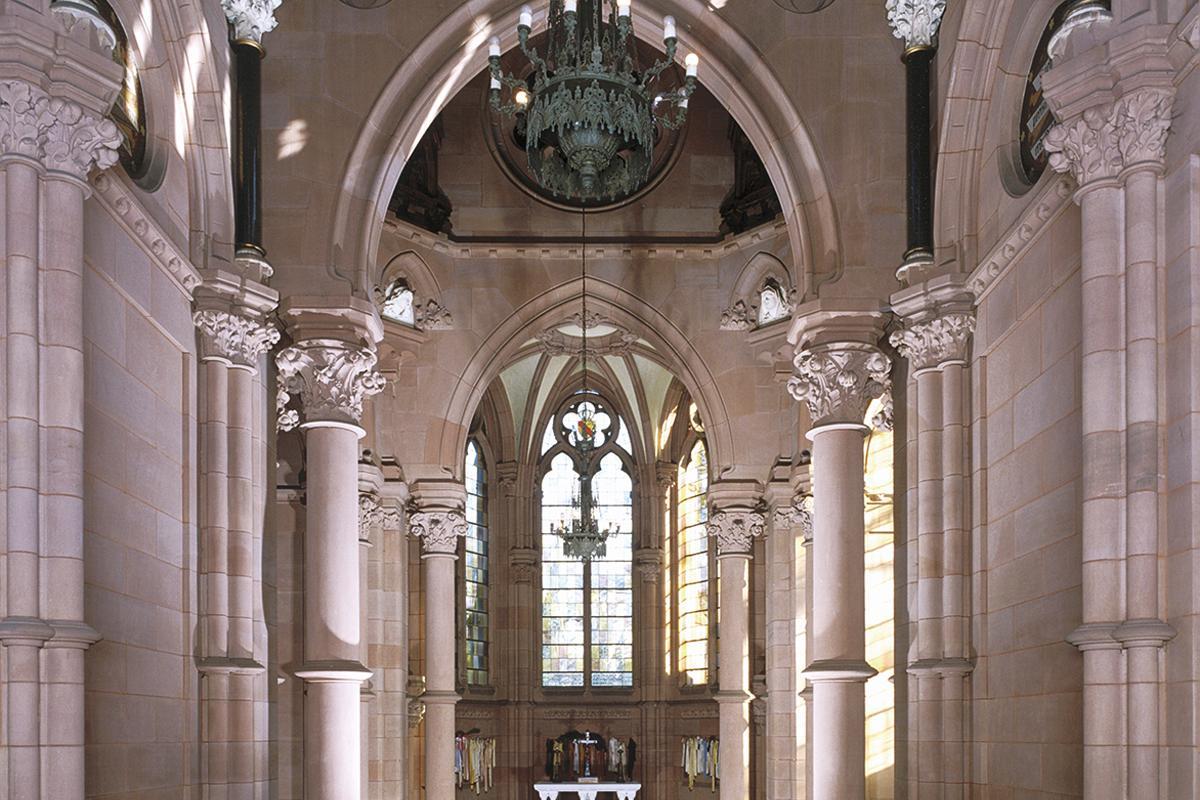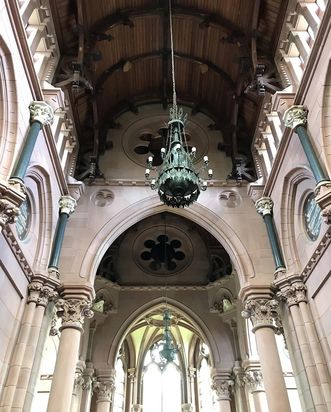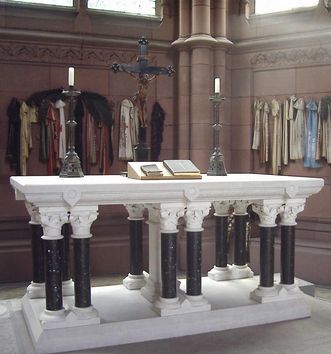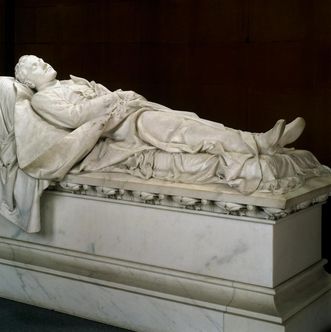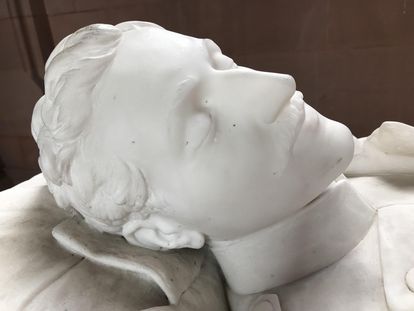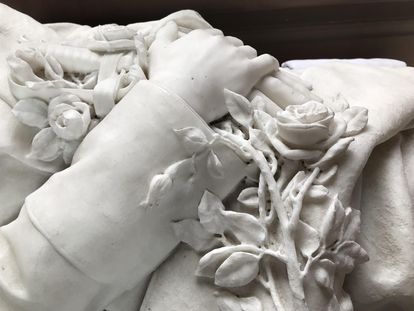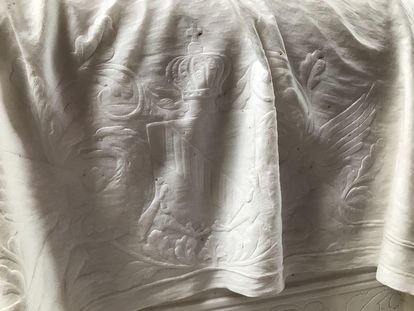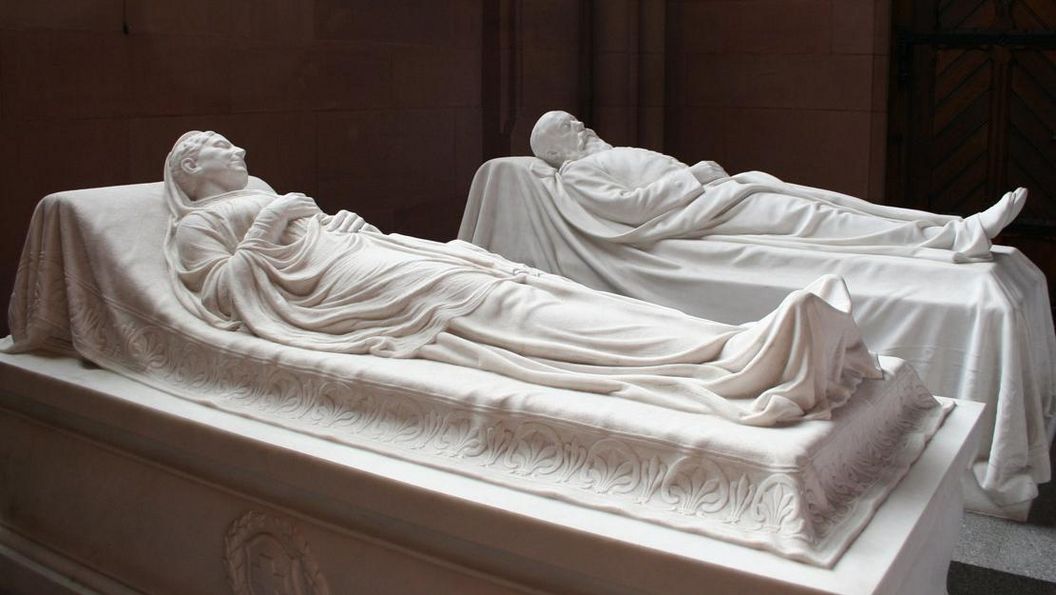A ceremonial space
In the past, the chapel was entered from the west portal on the Lärchenallee during burials. The nave and its pews are connected to the crossing, the short transept arms, and the choir as a place in memory of the dead. The decor is ceremonial: Quotes from the Bible can be found on the terrazzo floor and on the walls. The upper columns of the nave walls are made of black, shining, polished labradorite with light sandstone capitals. The wooden vaults and their idiosyncratic transverse arches are unusually rustic. The windows, which were lost due to an aerial mine in World War II, also contributed to the overall effect. Many of them had symmetrical ornamentation in rich colors.



